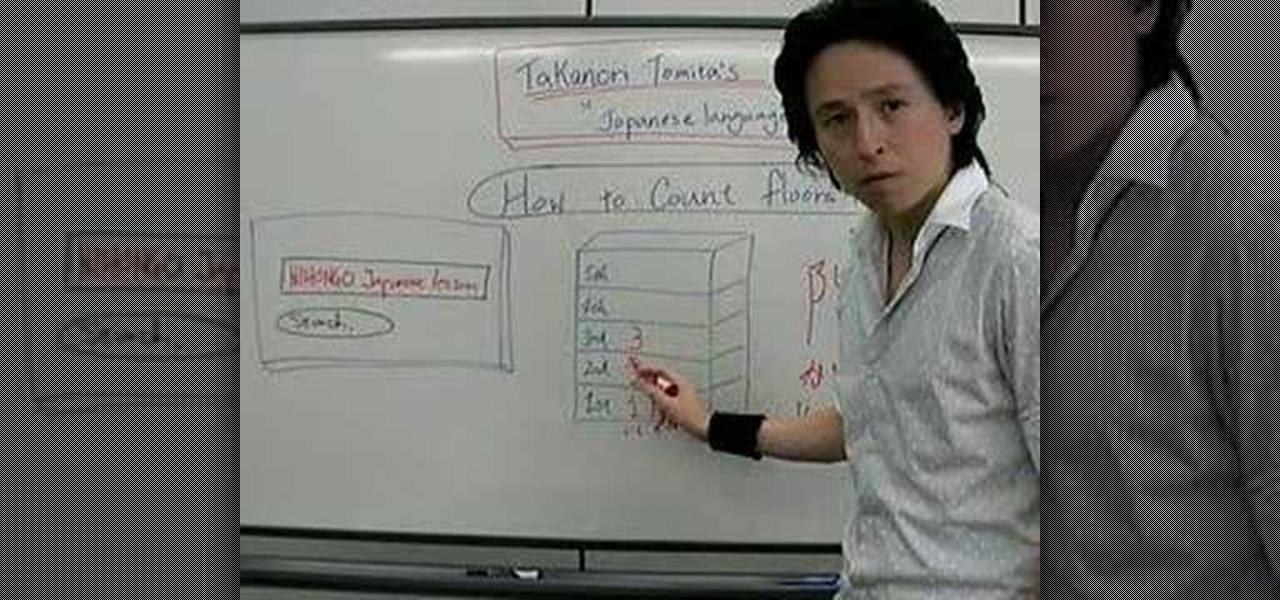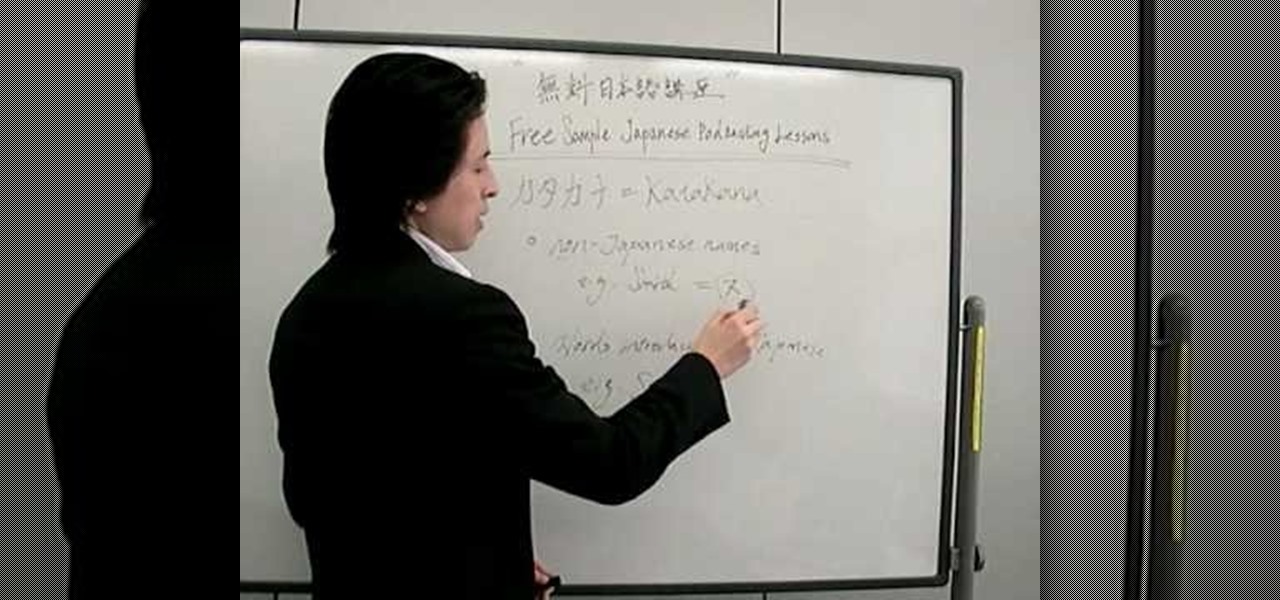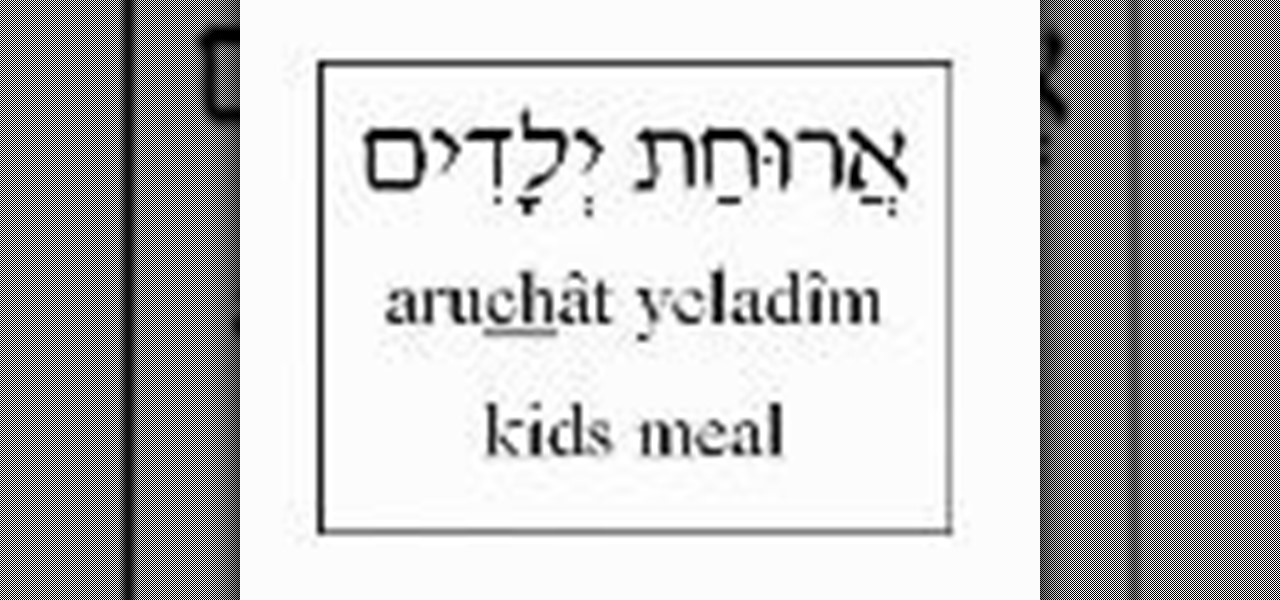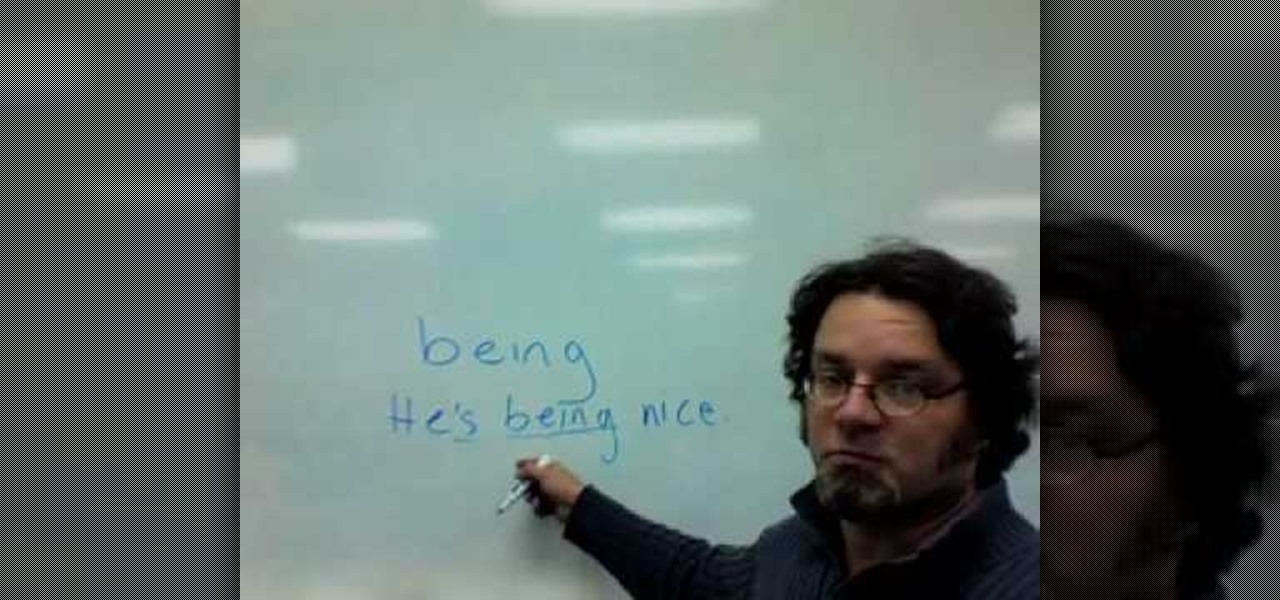Hot Language Posts


How To: Write Chinese symbols for entertainment & leisure
Our expert, Xi Chen, will show you how to write and tell you how to say different words for entertainment and leisure activities in Chinese. She will walk you step by step through the formation of each word and explain each aspect in this process.

How To: Write Chinese characters related to house rental
In this video series, our expert will teach you how to write and pronounce the Chinese symbols for words related to house rental. Learn about the derivation of words like landlord, rent out and apartments. Get tips on writing and pronouncing the Chinese word for expensive, utilities, and transportation with expert tips in this free language lesson video series.

How To: Speak basic Japanese
Learn simple Japanese phrases today in this video series with expert Yuu Asakura. Yuu gives you demonstrations for speaking and recognizing Japanese words in print. You will be able to ask questions conversationally, talk about your job, age, friends, and object around the room.

How To: Write Chinese characters using the radical for "water"
In this video series, graduate student and teaching assistant Esther-Xiaohua Liu will show you how to write Chinese characters by using the radical for "water." If any Chinese character contains the "Three-Dot-Water" radical, it will have some association to shui or "water." Learn to speak and write the characters for juice, converge, the Milky Way, sweat, dirt, soup, pond, irrigate, float, and many more! Esther-Xiaohu will give you what you need to recognize these water words in print today!

Write Chinese characters: stroke order
In this video series, expert Bo Feng shows you the proper stroke order for writing Chinese characters properly. The long tradition of calligraphy has developed techniques for writing that will make your characters seem more authentic. Bo teaches you the seven rules of writing Chinese characters: top to bottom, left to right, upper left to bottom right, outside to inside, horizontal before vertical, left slant before right slant, and center before wings.

How To: Write Chinese symbols for flowers
In this video language lesson series, our expert will teach you how to write and pronounce a variety of Chinese symbols for flowers. You will learn about how each Chinese characters is formed and derived and get tips on pronunciation. Learn such flower words as rose, lily, tulip, and lotus flower.

How To: Write Chinese symbols for body parts
Most modern Chinese words contain more than one syllable and therefore require multiple characters to write out. However, a person knowing the meanings of individual characters can often infer the general meaning of a word. In this video series, our expert will teach you how to write and pronounce the Chinese symbols for body parts.

How To: Write Chinese symbols for different types of fruit
Our expert, Xi Chen, will show you how to say many different types of fruits names in Chinese. She will walk you step by step through each name and explain each one at a time. Since there is a lot of important detail in each these lessons are invaluable to the serious student!

How To: Learn Japanese phrases for counting and buying
Learn simple Japanese phrases today in this video series with expert Yuu Asakura. Yuu gives you demonstrations for speaking and recognizing Japanese words about counting, currency, and buying things in Japan.

How To: Learn practical Japanese phrases for traveling
Learn simple Japanese phrases today in this video series with expert Yuu Asakura. Yuu gives you demonstrations for speaking and recognizing Japanese words in print. You will be able to arrange subjects and verbs in sentences, say "Please," and get around in Japan.

How To: Count floors in Japanese
Learn how to count the floors of a building in Japanese. It's easy if you can already count in Japanese.

How To: Count from 10 to 10,000 in Japanese
You might know how to count from 1 to 10, but in this lesson, you will learn how to count from 10 to 10,000 in Japanese.

How To: Write in Japanese using katakana
Takanori Tomita shows you how to write in Japanese using katakana. Find out what Katakana is, and how to write names or non-Japanese words in Japanese by using Katakana script.

How To: Speak Japanese in present and past tense
Takanori Tomita teaches you the difference between masu and mashita.

How To: Speak Japanese at a beauty salon
Takanori Tomita teaches you some useful phrases that can be used at a Japanese beauty salon to converse with the stylists.

How To: Read Japanese symbols
Takanori Tomita teaches you about Japanese symbols (Kanji, Hiragana, Katakana) learn when each type of script is used and how foreign words are written in Japanese.

How To: Speak and read some basic Mandarin
Learn to say and read some basic Mandarin words/characters. This is one kind of Chinese language, the other being Cantonese.

How To: Say "I love you" in dozens of different languages
Impress your lover by telling them you love them in several different languages. This video will teach you how to say "I love you" in English, Spanish, Italian, Mandarin, Japanese, Russian, German, and more!

How To: Sign common phrases in sign language
In this video series, learn how to sign common phrases. Learn how to sign animals and colors. Part 1 of 15 - How to Sign common phrases in sign language.

How To: Do basic sign language
Sign language, an often overlooked language, is incredibly beneficial to know and fun to learn. American sign language is very easy to learn for native English speakers and requires only a modicum of dedication, but the benefits of knowing sign language are immense. Imagine being able to communicate with someone who is often ignored because they cannot hear or speak the same language as those around them.

How To: Speak French
Ma France is an interactive flash video that takes you step-by-step through the stages of learning basic French. You may want to save this one since you can stop and start again when you're ready for more. Speak French.

How To: Speak Spanish at a coffee shop
10 conversational Spanish phrases that you can use in a coffee shop. Includes ordering drinks and asking about wireless Internet. Subtitles are included for help with pronunciation. Speak Spanish at a coffee shop.

How To: Speak Spanish in a restaurant
10 conversational Spanish phrases for use in a restaurant including ordering food and talking with your waiter. Subtitles are included for help with pronunciation Speak Spanish in a restaurant.

How To: Speak Spanish on a first date
Looking to make a good first date impression with that Spanish-speaking girl you met? Here are 10 conversational Spanish phrases that can be used on a first date including several compliments. Subtitles are included for help with pronunciation. Speak Spanish on a first date.

How To: Speak Spanish when camping
Here are 10 easy Spanish phrases that you can use on a camping trip or while hiking. Subtitles are included for help with pronunciation Speak Spanish when camping.

How To: Check into a hotel in Spanish
Here are 10 Spanish phrases to help you not only find a hotel room but to find one with all of the amenities you want. Subtitles are included for help with pronunciation.

How To: Use the Spanish word "hablar"
Larry Keim, the host of "Rolling R's", teaches Junior High School Spanish in Mesa, Arizona. He has a passion for Spanish, and he's created this video podcast to give away Spanish lessons for free. This video covers the verb hablar, which means "to speak". Use the Spanish word "hablar".

How To: Use the Spanish verb "hacer"
Larry Keim, the host of "Rolling R's", teaches Junior High School Spanish and has created this video podcast to give away Spanish lessons for free. In this show, Larry demonstrates the verb “hacer” which means “to do" or "to make.” He'll go over how to say it and how to use it.

How To: Say the days of the week in Spanish
In this lesson, Larry Keim demonstrates how to say the days of the week, how to ask what day it is, and how to say some other related phrases in Spanish. He goes over each word step by step and gives the English and Spanish version so it's very easy to understand.

How To: Say the months of the year in Spanish
In this Spanish lesson, Larry Keim demonstrates how to say the months of the year, and how to say the date, and how to say your birthday. The pace is great so you should be learning in no time.

How To: Use “Ir + a + Infinitive” formula in Spanish
Larry Keim, the host of "Rolling R's", teaches Junior High School Spanish in Mesa, Arizona. He has a passion for Spanish, and has created this video podcast to give away Spanish lessons for free. For the lesson portion, Larry describes an easy way to talk about future action, using the formula of “Ir + a + Infinitive.”

How To: Speak a few Klingon words
Learn a few simple phrases in Klingon while hanging out in a restaurant. Kapla!

How To: Use the Spanish verb "gustar"
Larry Keim, the host of "Rolling R's", teaches Junior High School Spanish in Mesa, Arizona. He has a passion for Spanish, and he's created this video podcast to give away Spanish lessons for free. In this lesson, Larry shows you how to say “I like . . .” using the Spanish verb gustar.

How To: Use Spanish verb "llevar"
Larry Keim, the host of "Rolling R's", teaches Junior High School Spanish in Mesa, Arizona. He has a passion for Spanish, and he's created this video podcast to give away Spanish lessons for free. In this show, Larry introduces you to the Spanish verb “llevar” which means “to wear”.

How To: Use Spanish verb "ir"
Larry Keim, the host of "Rolling R's", teaches Junior High School Spanish in Mesa, Arizona. He has a passion for Spanish, and he's created this video podcast to give away Spanish lessons for free. In this lession, Larry shows how to use the Spanish verb “ir” that is pronounced like “ear” and means “to go.”

How To: Tell time in Spanish
Larry Keim, the host of "Rolling R's", teaches Junior High School Spanish in Mesa, Arizona. He has a passion for Spanish and he's created this video podcast to give away Spanish lessons for free. In this episode, Larry will teach you how to tell time in Spanish.

How To: Learn Hebrew restaurant vocabulary
In this lesson 25 Hebrew restaurant words are taught with audio so that you can learn how to pronounce the words correctly. An English translation of each word is the screen as the word is pronounced.

How To: Learn the British sign language alphabet
This is a wonderful video which teaches you the alphabet of British sign language. BSL, British sign language is totally different than English sign language. Learn the British sign language alphabet.

How To: Name parts of the face in Spanish
This is an interactive game for children to learn the Spanish name for parts of the face. Name parts of the face in Spanish.

How To: Speak Spanish
There is no English in this lesson but sometimes that is the best way to learn! Follow along and learn how to speak Spanish with a detailed yet intermediate class based on pictures.







